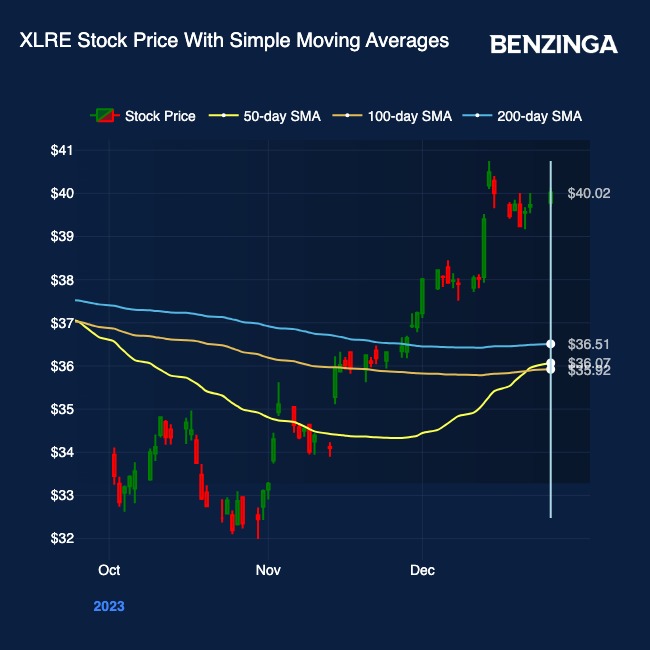Zinger Key Points
- U.S. 30-year Treasury yields fall below 4%, hitting a low since late July, fueling growth in fixed income, real estate.
- TLT ETF surges 21% since October; real estate sector up 19%, driven by lower yields and anticipated Fed rate cuts.
- China’s new tariffs just reignited the same market patterns that led to triple- and quadruple-digit wins for Matt Maley. Get the next trade alert free.
U.S. 30-year Treasury yields fell below the 4% mark on Wednesday, reaching their lowest level since late July. The decline in long-dated Treasury yields has sparked a remarkable surge in fixed income and real estate assets recently, as market participants increasingly bet on the Federal Reserve’s potential rate cuts in the coming year.
Anticipating the Fed’s Next Moves: Money market funds are currently pricing in a substantial 164 basis point reduction in interest rates by December 2024. The first cut, widely expected in March 2024, is now seen as a near certainty, with Fed futures indicating a 90% probability of this scenario.
Chart: US 30-Year Yields Fall Below 4%

Fixed Income Investments Outshine: Amid this backdrop, fixed income investments have come into the limelight. The iShares 20+ Year Treasury Bond ETF TLT, the world’s biggest bond exchange-traded fund (ETF) by asset under management, has soared 21% since late October, marking a notable entry into a bull market.
This surge reflects the inverse relationship between bond prices and yields, a fundamental principle in fixed income investing. The TLT ETF’s ascent is partly driven by investor enthusiasm. In the last three months alone, the fund witnessed over $8 billion in net inflows, highlighting its growing appeal.
Read also: Long-Duration Treasury Bonds Enter Bull Market: What Lies Ahead In 2024?
Technical Breakthrough: A key technical development for the long-dated Treasury gauge is its rise above the 200-day moving average, a threshold it hadn’t crossed since March 2023. This move is typically seen as a potential bullish trend reversal by technical chartists.

Relief to the Housing Market: The ripple effects of these trends extend to the housing mortgage market. As inflation shows signs of easing and the Fed signals forthcoming rate cuts, mortgage rates have been on a steady decline.
The average rate for a 30-year fixed mortgage dropped to 6.67% as of December 21st, continuing its downward trajectory for the eighth consecutive week. This rate is the lowest since June, offering much-needed relief to homebuyers.
Read also: US Mortgage Rates Drop To 6-Month Low: A Turning Point For The Housing Market?
Real Estate Sector Rallies: The Real Estate Select Sector SPDR Fund XLRE has emerged as the top sector performer over the past three months, capitalizing on the environment of declining anticipated interest rates and Treasury yields. The real estate sector, as represented by this fund, has surged by 19% in this period, underlining the sector’s robust sensitivity to the changes in interest rates.

Now read: Ed Yardeni’s 12 Reasons For Being Bullish On S&P 500 In Upcoming Year
Photo: Shutterstock
Edge Rankings
Price Trend
© 2025 Benzinga.com. Benzinga does not provide investment advice. All rights reserved.
Trade confidently with insights and alerts from analyst ratings, free reports and breaking news that affects the stocks you care about.